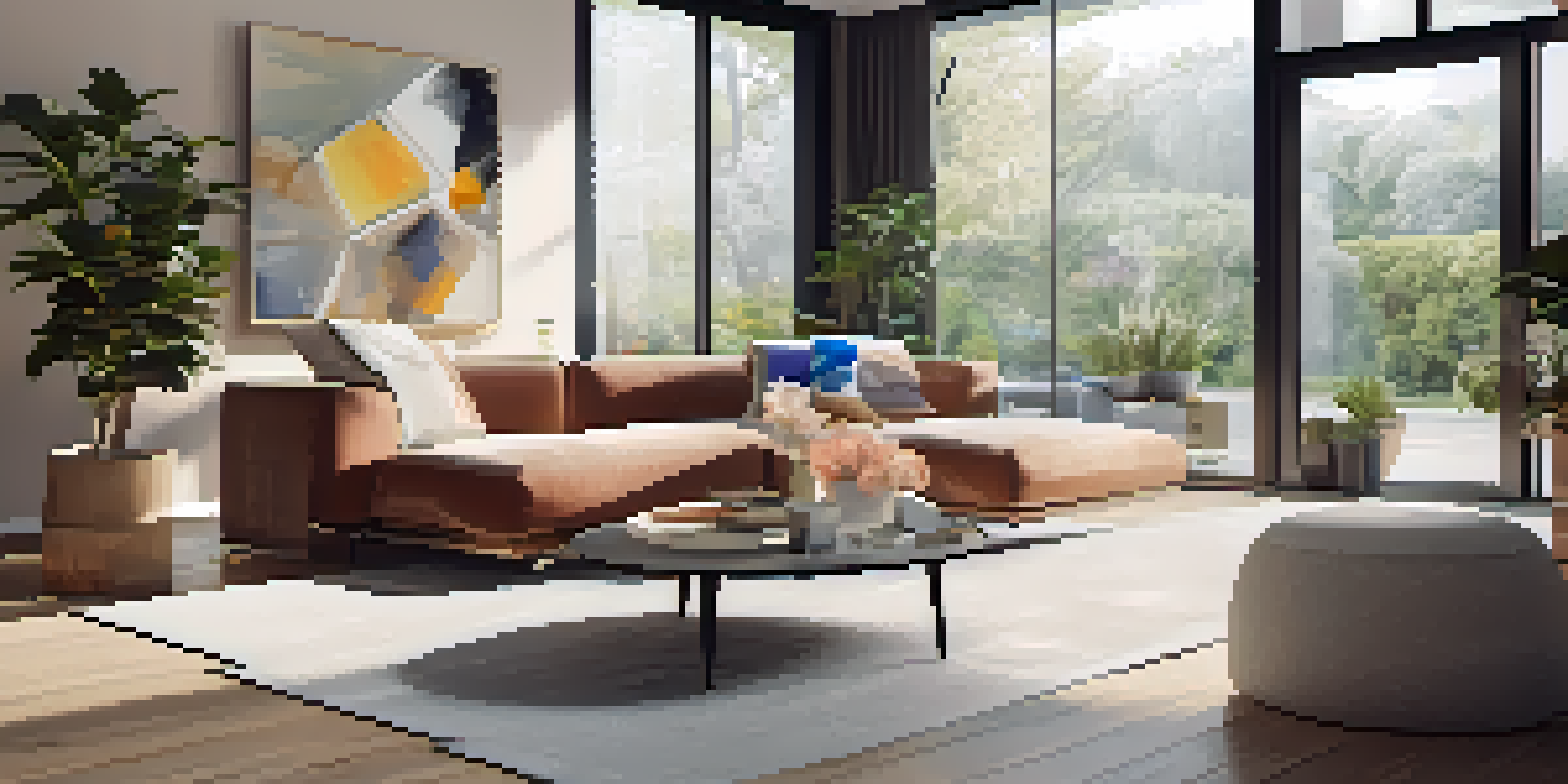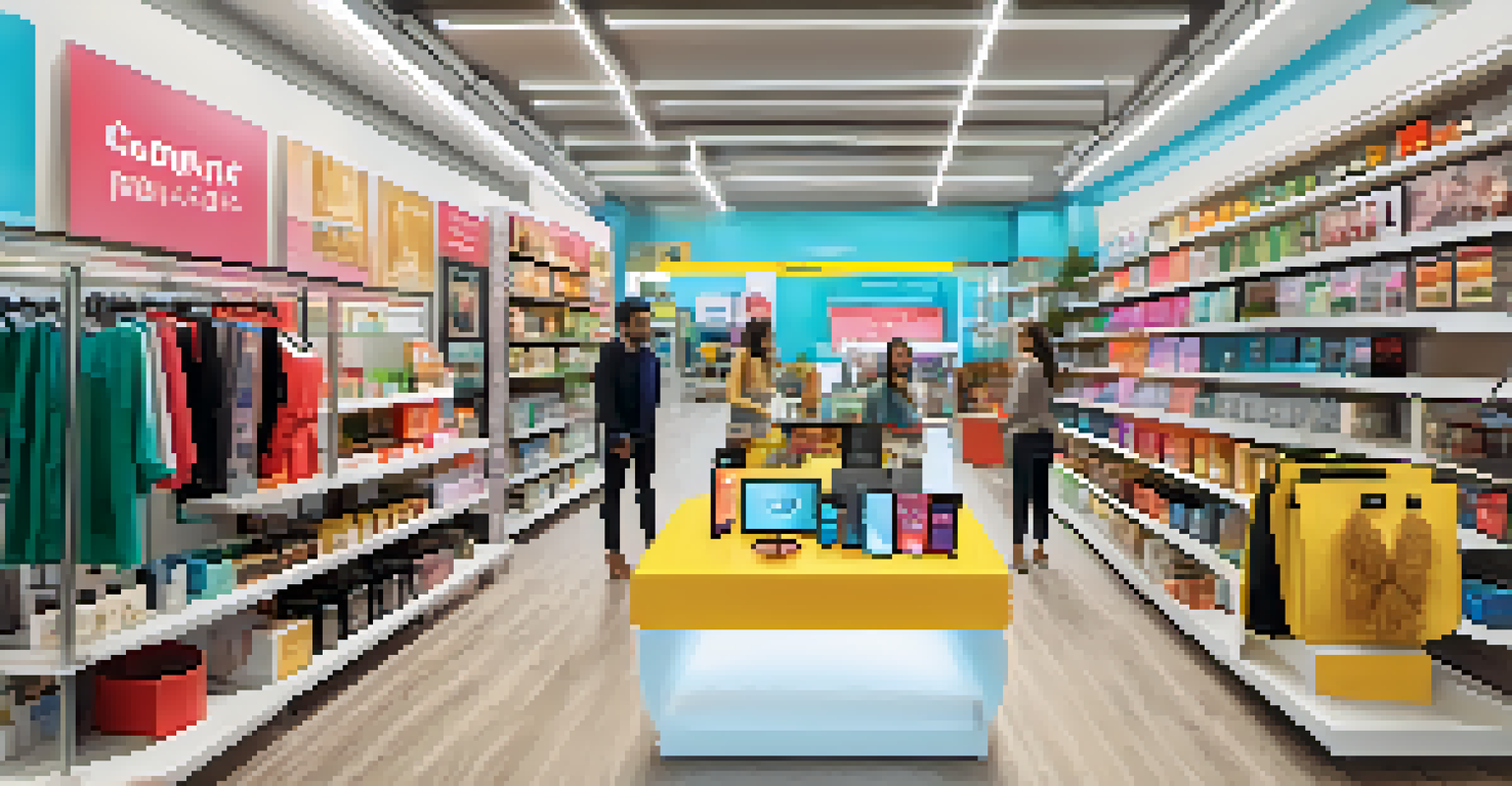The Role of AR in Enhancing Product Visualization in Retail

Understanding Augmented Reality in Retail
Augmented Reality (AR) is a technology that overlays digital information onto the real world, enhancing our perception of reality. In retail, this means customers can see products in their own environment before making a purchase. For example, furniture retailers like IKEA use AR apps to let shoppers visualize how a couch might look in their living room.
Augmented Reality is not just a marketing gimmick; it’s a powerful tool that can enhance customer engagement and conversion rates.
This technology bridges the gap between physical and digital shopping, offering a more immersive experience. By bringing products to life, AR helps customers make informed decisions, reducing the uncertainty that often accompanies online shopping. As a result, retailers can enhance customer satisfaction and drive sales.
Additionally, AR fosters engagement by turning the shopping process into an interactive experience. When consumers can visualize products in their own space, it creates a personal connection, making them more likely to complete a purchase.
Benefits of AR for Product Visualization
One of the primary benefits of AR in retail is improved product understanding. Shoppers can see how items fit within their environment, allowing for better assessment of size, color, and style. This is particularly beneficial for high-involvement purchases where customers may hesitate due to uncertainty.

Moreover, AR can reduce return rates by giving consumers a realistic preview of products. When customers can visualize how a product looks in their space, they are less likely to experience buyer's remorse. This not only saves retailers money but also enhances the overall shopping experience.
AR Enhances Retail Shopping Experience
Augmented Reality transforms the retail experience by allowing customers to visualize products in their own environment, leading to more informed purchasing decisions.
Finally, AR can drive customer engagement through gamification elements. Retailers can create fun experiences, such as virtual try-ons or interactive product demos, which can encourage customers to spend more time exploring their offerings.
AR Applications in Retail: Real-World Examples
Leading retail brands are pioneering AR applications to enhance product visualization. For instance, Sephora’s Virtual Artist app allows customers to try on makeup virtually before purchasing. This innovative approach not only boosts confidence in buying but also increases customer interaction with the brand.
The future of retail is not about the transaction; it's about the experience. AR is key to creating that experience.
Similarly, Lowe's offers an AR tool called the 'Holoroom,' which lets shoppers visualize home improvement projects in a virtual space. Customers can see how different products and layouts would look in their homes, making the shopping experience more engaging and informative.
These examples illustrate how AR can transform the way customers interact with products, ultimately leading to higher sales and improved customer loyalty.
Enhancing Customer Experience Through AR
AR technology greatly enhances the customer experience by providing instant access to product information. Shoppers can use their smartphones to scan a product and receive details like specifications, reviews, and even styling tips. This level of transparency helps customers feel more informed and confident in their purchases.
Moreover, AR can create immersive experiences that excite and engage customers. Imagine walking into a store and seeing interactive displays that showcase products in action, drawing you in and encouraging exploration. This not only enhances the shopping experience but also fosters a deeper connection between the consumer and the brand.
Reduced Returns with AR Visualization
By providing realistic previews of products, AR helps minimize buyer's remorse and subsequently lowers return rates for retailers.
Ultimately, when customers have a positive shopping experience, they are more likely to return. By utilizing AR, retailers can create memorable interactions that keep consumers coming back for more.
Overcoming Challenges in AR Implementation
Despite its advantages, implementing AR in retail can present several challenges. One major hurdle is the cost of technology development and integration. Smaller retailers may find it difficult to invest in AR solutions, making it essential for them to seek affordable options or partnerships.
Another challenge is ensuring that the AR experience is user-friendly. If customers find the technology complicated or frustrating, they may abandon it altogether. Retailers must prioritize intuitive design and seamless functionality to encourage adoption and satisfaction.
Lastly, keeping up with technological advancements can be daunting. Retailers must continuously update their AR features to remain competitive and relevant in the fast-paced retail landscape.
The Future of AR in Retail Visualization
The future of AR in retail product visualization looks promising, with advancements in technology paving the way for even more innovative applications. As AR continues to evolve, we can expect more personalized and immersive shopping experiences that cater to individual consumer preferences.
Additionally, integrating AR with artificial intelligence (AI) could offer even more tailored recommendations and insights for shoppers. Imagine an AR experience that learns from your preferences and suggests products that perfectly match your style and needs.
Future of AR in Retail is Bright
The integration of AR with advancements like AI promises increasingly personalized shopping experiences, giving early adopters a competitive edge.
As AR becomes more mainstream, retailers who embrace this technology early on will likely gain a competitive edge, attracting more customers and enhancing loyalty through unique shopping experiences.
Conclusion: Embracing AR in Retail Strategy
In conclusion, augmented reality is revolutionizing product visualization in retail by providing immersive and engaging experiences for customers. By allowing shoppers to interact with products in a virtual space, AR helps build confidence in purchasing decisions while reducing return rates.
Retailers that embrace AR technology can differentiate themselves in a crowded market, creating memorable experiences that resonate with consumers. As more customers seek innovative shopping solutions, incorporating AR into retail strategies will be crucial for success.

Ultimately, the integration of AR in retail is not just a trend; it's a game-changer that can lead to enhanced customer satisfaction, loyalty, and increased sales.